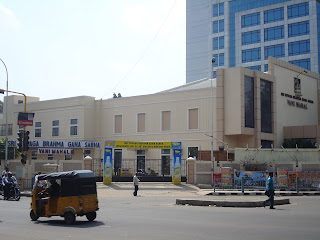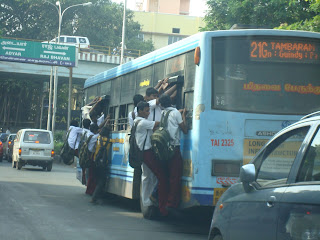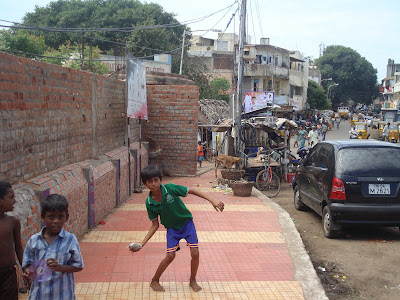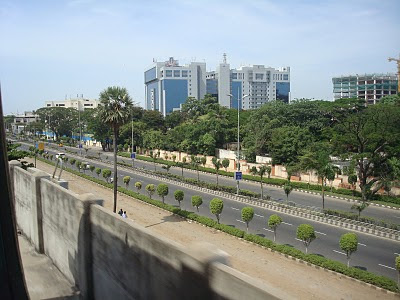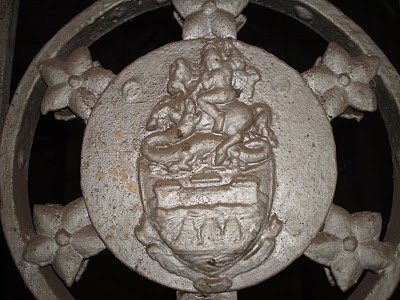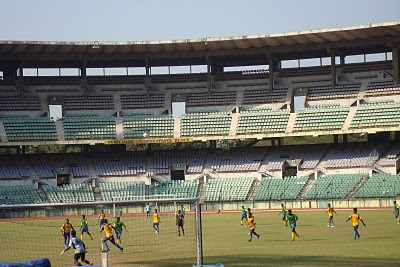This is not a house which catches your eye from the street. When it was originally built by Musiri Subramania Iyer, it probably had a large garden in front of the building, and a drive-way winding up to the door from Oliver Road. Musiri was one of the first carnatic musicians to buy a car and was, according to Semmangudi Srinivasa Iyer, the one man who bestowed "gauravam" (prestige) on the carnatic musician.
In keeping with his stature, this house has played host to several famous people. Apart from Musiri's contemporaries in the carnatic music firmament, businessmen, lawyers, and civil servants have all passed through its doors. These days, the doors continue to be open for anyone with more than a passing interest in carnatic music; Musiri's grandson has a sort of open house once a month or so, when one doesn't need an invite, but can walk in if interested.
The driveway, if ever there was one, is gone. So has Oliver Road - thanks to Semmangudi's lobbying, it was renamed Musiri Subramanian Salai. Quaintly enough, Subramania Iyer was not from Musiri, but was born at Bommalapalayam; his friend S.Y. Krishnaswami says that Subramania Iyer, when asked about it, is supposed to have replied half in jest, "How can a carnatic musician prefix such a name!"

